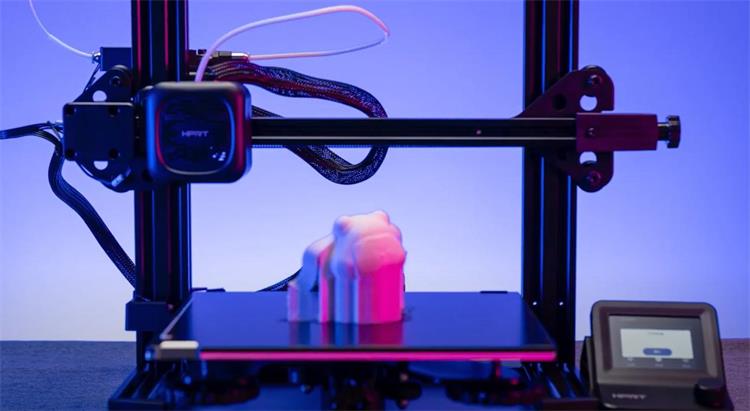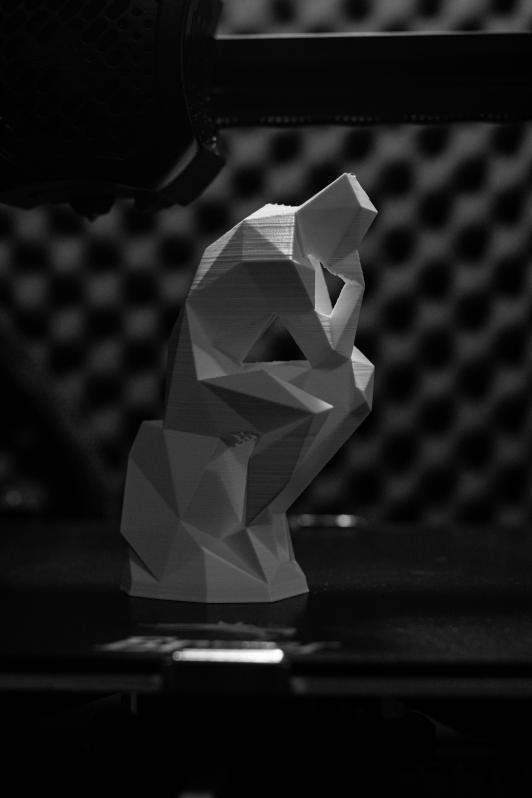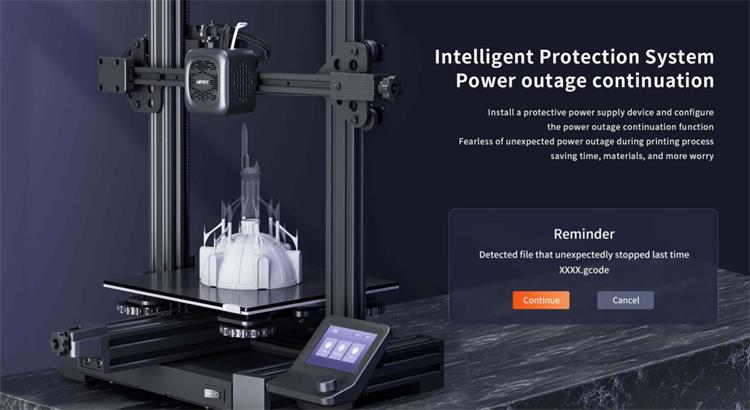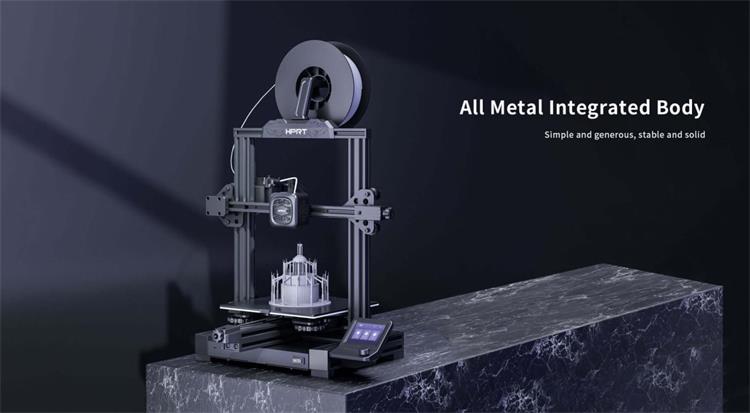How to Choose the Right FDM 3D Printer for Your Needs?
2023-08-19 15:50
With the rapid advancement of 3D printing technology, FDM 3D printing is no longer a niche domain reserved for tech enthusiasts. More and more 3D printing hobbyists, artisans, and industrial manufacturers are diving into the world of FDM 3D printing. Given the plethora of options available in the market, selecting the right FDM 3D printer can seem daunting. Fear not! This article offers practical advice from various perspectives to guide your purchase.

1. Desktop vs. Industrial FDM 3D Printers
Popular online videos showcase intricate figurines, models, and phone cases, most of which are crafted using desktop 3D printers. These compact machines, ideal for office desks or workbenches, have gained immense popularity among individual users, designers, educational institutions, and small businesses. They’re frequently used for printing small components, 3D printing architectural models, and educational molds.
Interestingly, these printers also play a pivotal role in the manufacturing sector, especially in CNC precision machining. They can swiftly cater to diverse requirements on the production line, offering highly customized fixtures without the need for mold creation, ensuring unparalleled flexibility.
On the other hand, industrial 3D printers, specifically those using FDM 3D printing, are typically larger and more precise. They can produce a wide range of large components and intricate models, such as automotive parts, aerospace components, and industrial equipment. These are well suited for large enterprises, manufacturers, and research institutions, particularly for producing lightweight and durable engineering polymer parts.
So, the first step is to carefully assess your printing needs and choose the type of 3D printer that aligns with them.
2. Printing Precision
The accuracy of a 3D printer is a crucial performance metric. Generally, higher precision results in richer model details and smoother surfaces.

For instance, desktop FDM 3D printers usually have a precision ranging from 0.1mm to 0.3mm, sufficient for most individual users, educational institutions, and small businesses. However, if you’re a designer or artist with a keen eye for detail, a printer with higher precision, say 0.05mm, might be more apt.
Industrial FDM 3D printers, designed for large components and complex industrial prototypes, often demand higher precision. These machines can achieve accuracies of up to 0.05mm or even 0.01mm, catering to more specialized manufacturing and research applications.
However, it’s essential to note that higher precision doesn’t always equate to better results. For instance, a printer with 0.05mm precision might produce highly detailed models but at a slower pace compared to a 0.2mm precision printer. The former might also consume more material and require more post-processing work. Hence, it’s vital to balance precision with practicality based on your specific needs.
3. Build Volume of FDM 3D Printers
The build volume, often referred to as the printing volume or space, denotes the maximum object size a 3D printer can produce. This parameter is crucial as it determines the feasibility of specific printing tasks.
For instance, if you’re an enthusiast looking to print intricate figurines or complex models, a desktop FDM 3D printer with a typical build volume of around 200mm x 200mm x 200mm might suffice.
However, industrial users printing large components or batches of smaller parts might need an industrial-grade FDM 3D printer with a much larger build volume, possibly reaching dimensions of 1000mm x 1000mm x 1000mm or more.
It’s essential to remember that the printer’s build volume doesn’t necessarily represent the maximum model size you can print, as you’ll also need to account for support structures and model placement.
4. FDM 3D Printing Materials
Different 3D printers support various printing materials, each with its unique properties and applications. For instance, PLA (Polylactic Acid) is a popular FDM 3D printing material known for its excellent printability, making it a favorite in education, artistic creation, and prototyping.
TPU (Thermoplastic Polyurethane) offers excellent elasticity and wear resistance, ideal for parts requiring flexibility and durability, like shoe soles and seals. It’s commonly used in footwear manufacturing and the automotive industry.
PETG (Polyethylene Terephthalate Glycol) is a robust material with impressive transparency, suitable for sturdy and transparent parts like lampshades and containers, making it a go-to in lighting and 3D printed packaging materials.
Other materials like ABS and Nylon also find extensive applications in plastic toys (like LEGO bricks), household appliance casings, automotive parts, and more. When choosing a 3D printer, ensure it supports the materials you intend to use.
5. FDM 3D Printing Speed
Printing speed directly impacts the completion time of a task. Especially in an industrial setting with bulk production, the significance of printing speed becomes paramount.
For desktop 3D printers, your primary consideration should be your printing requirements. If you’re mainly printing small models or parts, speed might not be a priority. However, if you need to rapidly produce multiple models, then a faster printer, which doesn’t compromise on precision, becomes essential.
6. Additional Features
Other factors worth considering include power outage recovery, filament detection, and multi-color printing. These additional features are invaluable for 3D printing novices and enthusiasts, enhancing efficiency and the overall printing experience.
We highly recommend the HPRT high-precision 3D printer F210. This entry-level desktop 3D printer comes equipped with an intelligent protection system, supporting power outage recovery and filament detection.

This means that in the event of an unexpected power cut, it can resume and complete the ongoing print job, preventing material and time wastage. Additionally, when the printing material runs out, the printer automatically pauses, preventing print failures.
The HPRT F210 3D printer has a build volume of 220×220×250mm, a printing precision of ±0.2mm, and supports various filaments, including PLA, TEPG, and TPU. It’s perfect for 3D enthusiasts, craft lovers, and educators looking to experiment with various materials. From anime figurines and DIY crafts to educational molds like pen holders, file folders, and phone stands, it’s ideal for home use or small studios, and it’s affordably priced.
Constructed with an all-metal body and high-quality V-shaped material rollers, the HPRT F210 ensures a smooth printing process with minimal noise. Its user-friendly UI display and intuitive knob controls make it easy for beginners.

HPRT F210 3D Printer Specifications:
Type:
FDM/FFF 3D Printer
Dimensions:
470×450×578mm
Build Volume:
220×220×250mm
Layer Height:
0.1mm-0.4mm
Precision:
±0.2mm
Weight:
9kg
Supported Materials:
PLA/PETG/TPU/ABS
Choosing the right FDM 3D printer requires a holistic evaluation of various factors. Besides the mentioned aspects, you should also consider your budget and conduct thorough research and comparisons. As technology matures and costs decrease, more businesses recognize the potential of FDM 3D printing.
HPRT has been deeply rooted in the printing domain for nearly two decades, continually pushing boundaries in the 3D printing sector by developing high-quality products. We’re committed to offering exceptional printing solutions tailored to diverse industry needs. Centered around our clients, we relentlessly innovate and strive for excellence.
Our products, known for their superior performance and consistent quality, have garnered acclaim and praise from numerous customers. If our products and services pique your interest, feel free to contact us. We look forward to collaborating with you and building a brighter future together. HPRT, your trusted 3D printing partner!







